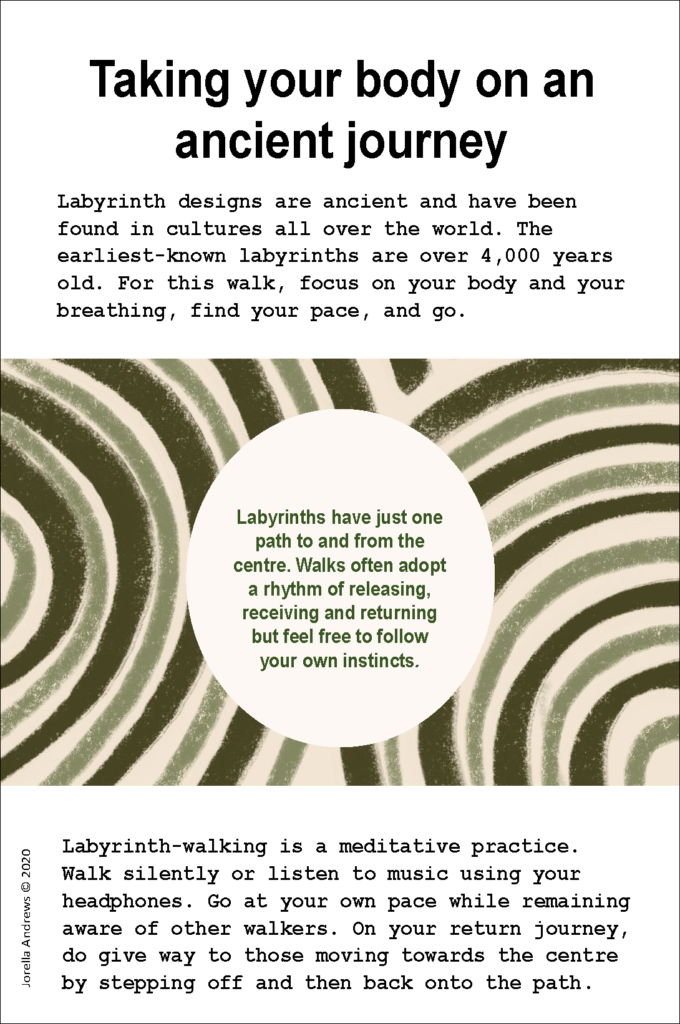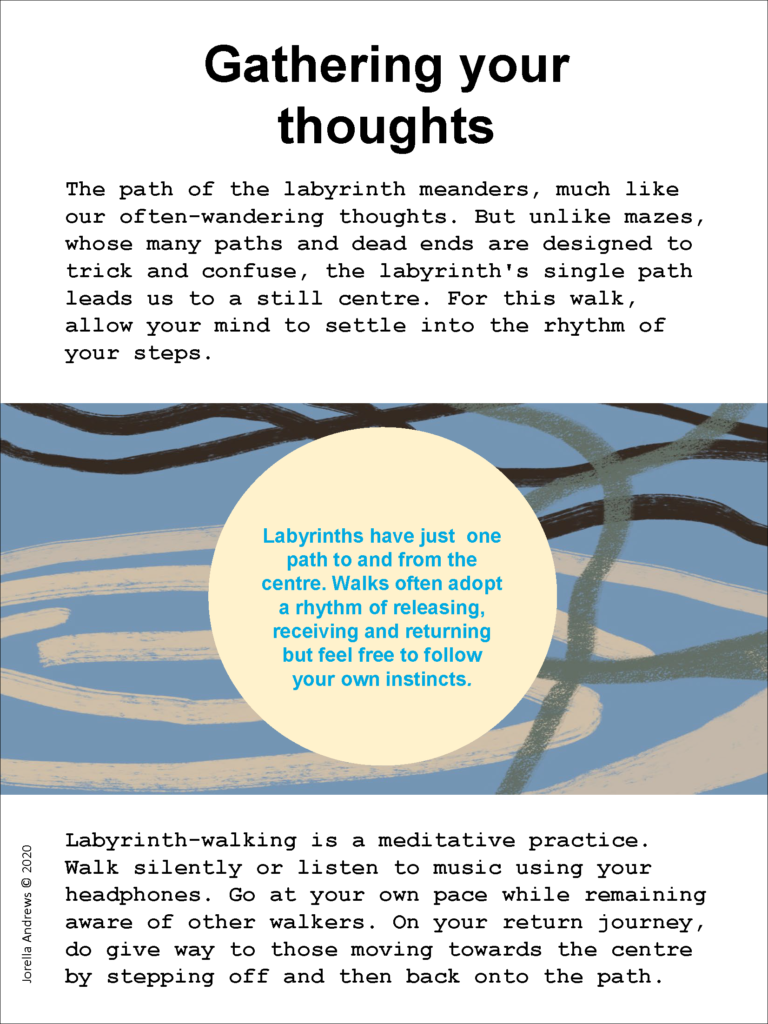Labyrinth Walking
Labyrinths enable us to practise an ancient walking meditation.
They invite us to follow a winding path that will eventually take us to the centre of the labyrinth if we just keep going. Unlike mazes (such as the one at nearby Crystal Palace), labyrinths don’t contain dead ends, and we won’t get lost in them.
Nonetheless, following the twists and turns of the labyrinth’s circuitous route can raise mixed emotions as the path often seems to lead us away from our goal. As we walk, we can see the labyrinth’s centre but our feet don’t seem to be taking us there – yet!
If we don’t give up we always get there in the end and this makes labyrinth walking a surprisingly strengthening and encouraging exercise. It can remind us that persistence is a good thing to develop.
Some labyrinth-walking tips are included below.

Some poeple like to enter the labyrinth in a way that is meditative or prayerful. They will carry in with them a question or problem that needs resolving. They may pick up a small stone to symbolise this. As they follow the path, step by step towards the centre, they practise letting the problem go and, with it, the anxiety or unrest that may have troubling them.
When they reach the centre they stop for as long as they like with the aim of receiving peace or insight. They may lay down the stone they’d carried in and just leave it there. When they are ready, they walk back out.
For some people, a solution, resolution, or shift in perspective will come to mind when they are standing at the labyrinth’s centre. For others, this might happen on the winding walk back out. Or it might occur later on.
In any case, even without a specific agenda, walking the labyrinth regularly is a calming, whole person experience. Labyrinths encourage careful, balanced walking and this simple activity, done regularly, can help improve focus, attention and awareness.


